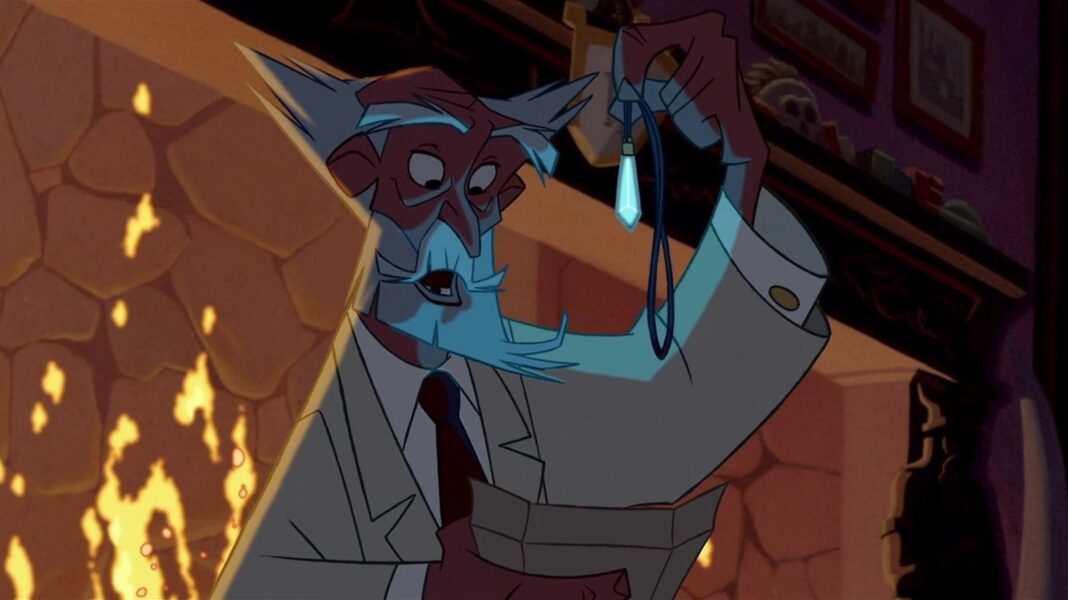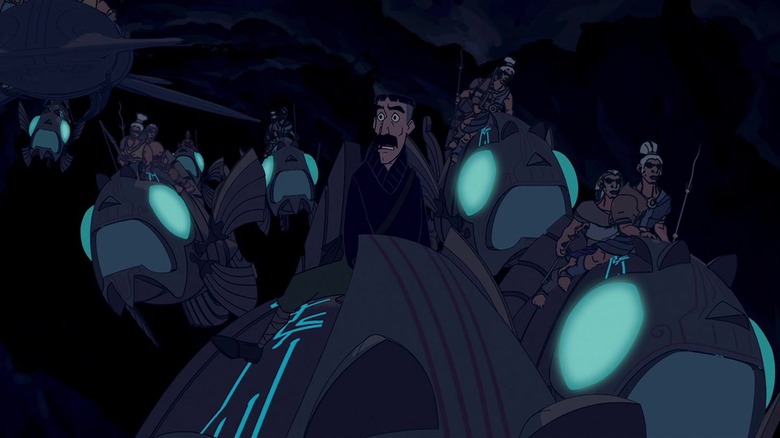For many decades, Disney Animation had an audience of young girls on lock. Thanks to multiple hit film adaptations of European folk tales, the “Disney Princess” became solidified in the mass consciousness. Films like “Snow White and the Seven Dwarfs” (1937), “Cinderella” (1950), “Sleeping Beauty” (1959), “The Little Mermaid” (1989), and “Beauty and the Beast” (1991) are still watched to this day, and still marketed under Disney’s lucrative “Princess” brand.
Disney, however, clearly longed to capture an audience of young boys as well. Adventure films like “The Rescuers,” fantasy films like “The Black Cauldron,” and comedies like “Robin Hood” weren’t cutting the mustard. Disney wanted to make a broad, tech-based, action-packed adventure — something modern — for hyped-up little male children. One can see them try time and time again, always no almost no success. “Tarzan” was a hit, but it was presented as a moody romance, not a jungle adventure. Their 2000 film “Dinosaur” was a bold technical experiment with state-of-the-art CGI, but it wasn’t a runaway success. The company’s most notorious failure of the era was 2002’s “Treasure Planet,” a sci-fi re-up of Robert Louis Stevenson’s “Treasure Island,” that audiences stayed away from in droves.
For the purposes of this article, we will zoom in on the 2001 film “Atlantis: The Lost Empire,” a steampunk “Indiana Jones”-style adventure derived from (but not directly based on) the works of Jules Verne. “Atlantis” had a young scientist at its center, Milo Thatch (Michael J. Fox), and he assembled a group of adventurers to follow an ancient map to the Lost City of Atlantis. It’s not as tight or as fun as an “Indiana Jones” movie, but it’s still worth a brief glance. If not for its story (which is predictable), then for its unusual, bracing animation and character designs.
Atlantis: The Lost Empire was Disney’s attempt at Steampunk
“Atlantis,” directed by Gary Trousdale and Kirk Wise, tells the story of Milo, an aspiring adventurer in 1914 Washington. He discovers a mistranslated code on an old map, leading him to believe he can locate Atlantis. He wishes to carry on the legacy of his grandfather, who was also an adventurer. Milo hires a submarine called the Ulysses and a ragtag team of researchers and experts to help him on his mission. The large group is played by a who’s-who of notable actors. James Garner plays the submarine Commander Rourke. Claudia Christian plays his lieutenant, Helga Sinclair. Don Novello cracks out his Guido Sarducci voice to play the explosives expert Vincenzo Santorini. The role of the mission’s chef, Cookie, was played by Jim Varney, who died a year before the film’s release. “Atlantis” was his final role. Leonard Nimoy plays an Atlantean king.
After a long undersea ordeal, the team does indeed locate Atlantis, and Milo becomes enamored of the Atlantean princess Kida (Cree Summer). The Atlanteans have been able to survive in an undersea biome thanks to a large magic crystal at the center of the city. The denizens all wear a crystal shard that allows them to live for multiple millennia. Kida is actually 8,500 years old. Naturally, several members of Milo’s team, short-sighted and blinded by greed, will secretly aim to steal the Atlantean crystal and sell it back home. Milo will have to use ancient Atlantean flying machines to stop the theft. There’s a lot of large, demonstrative language and outsize set pieces that stretch the film out to 96 minutes, which is kind of long, as pre-2000 Disney animated features go.
The film was so action-packed, it got a PG rating.
Atlantis was visually ambitious
The visuals in “Atlantis: The Lost Empire” are a step above anything Disney had done before, and that’s saying something. The designs were detailed and meticulous, with CGI being employed to realize the vehicles and stones, and many backgrounds. The characters, to counter this, were designed to have extra-square, stylized features, giving them a comic-book look. One might compare the visuals to a Tintin adventure, just with a cooler, darker color palette. The only bad thing about the designs is that they were too detailed to truly appreciate in a film this short. The pace of “Atlantis” is so swift, a lot of the gorgeous details speed by the camera, not allowing the audience to stand in awe of any of it.
Marc Okrand, the writer of the Klingon language, helped invent the Atlantean language heard in “Atlantis.” Yes, James Cameron’s “Avatar” bears a heck of a lot of similarities to this movie that came out eight years earlier. Of course, “Atlantis” bears an uncanny resemblance to the 1990 anime series “Nadia: The Secret of Blue Water,” and there was talk of legal action over plagiarism. But then, furthermore, both “Atlantis” and “Nadia” were inspired by Jules Verne’s 1870 novel “Twenty Thousand Leagues Under the Sea,” so we may just be dealing with the Anxiety of Influence.
“Atlantis” was not a hit, making $186 million on a budget of $120 million. It also wasn’t deeply beloved by most critics, getting a mere 48% approval rating on Rotten Tomatoes. Most critics agreed that the story was boring and the characters were flat, even if the visuals were astonishing. Roger Ebert, a fan of boys’ adventure novels, gave the film a glowing review, saying — complimentarily — that “Atlantis” reminded him of reading Classics Comics.
And many love it to this day.





